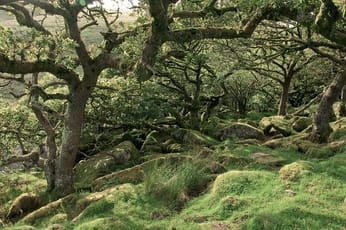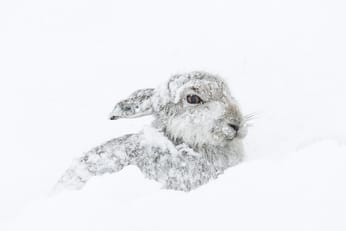
A Gaelic christening for Scotland's newest species
A new project is naming the plants and animals that have recently arrived on these shores due to climate change.
In 2007, the Oxford Junior Dictionary sparked a furore after it removed dozens of nature-related words, replacing them with terms deemed more important to 21st century children.
Instead of beech, bluebell and kingfisher, there was broadband, blog and chatroom. More than 53,000 people subsequently signed a petition calling on the editors to reinstate the dropped words.
The campaigners weren’t just mourning the loss of words; they were alarmed at the deepening disconnect from nature, and what this might mean for the health of humans and wildlife alike. As the British writer Robert Macfarlane put it: “Language deficit leads to attention deficit”.
Even languages that have historically paid close attention to place – like Gaelic – are not immune to this loss. With the dying out of age-old agricultural practices, many of the terms used by those working the land are now being forgotten, along with the insights they revealed into the living world.
Against this backdrop of loss, Derek Robertson – a Gaelic-speaking wildlife artist born and raised in Fife – wanted to explore the flipside: namely, the new species establishing themselves in Scotland that don’t yet have Gaelic names.
For him, these newcomers are important environmental indicators, highlighting the impacts of climate change, for instance, which is causing a mass shifting of species around the world. When mentioning such species in his daily life, Robertson would end up either borrowing the English word or literally translating the English words for the species into Gaelic – a compromise which he often found “uncomfortable and unsatisfactory”.
As a result, From the Bird’s Mouth (Bho Bheul an Eòin) was born, a project which allows speakers of Scots Gaelic to give voice to the new nature around them by creating Gaelic names for species new to Scotland. With support from NatureScot and Bòrd na Gàidhlig (The Gaelic Language Board), Robertson formed an advisory panel which would help give their proposals an official backing recognised by government agencies.
“We were looking for species that were new in the landscape, did not yet have established Gaelic names and tended to tell a story about human agency – largely that was climate change,” he says.
Some 40 species have been included so far, including creatures such as the white-letter hairstreak butterfly (Stiallag Gheal), leathery sea squirt (Spùtachan-Mara Leatharach) and firecrest (Crìonag Lasrach), as well as various plants that have adapted to Scotland’s milder climate.
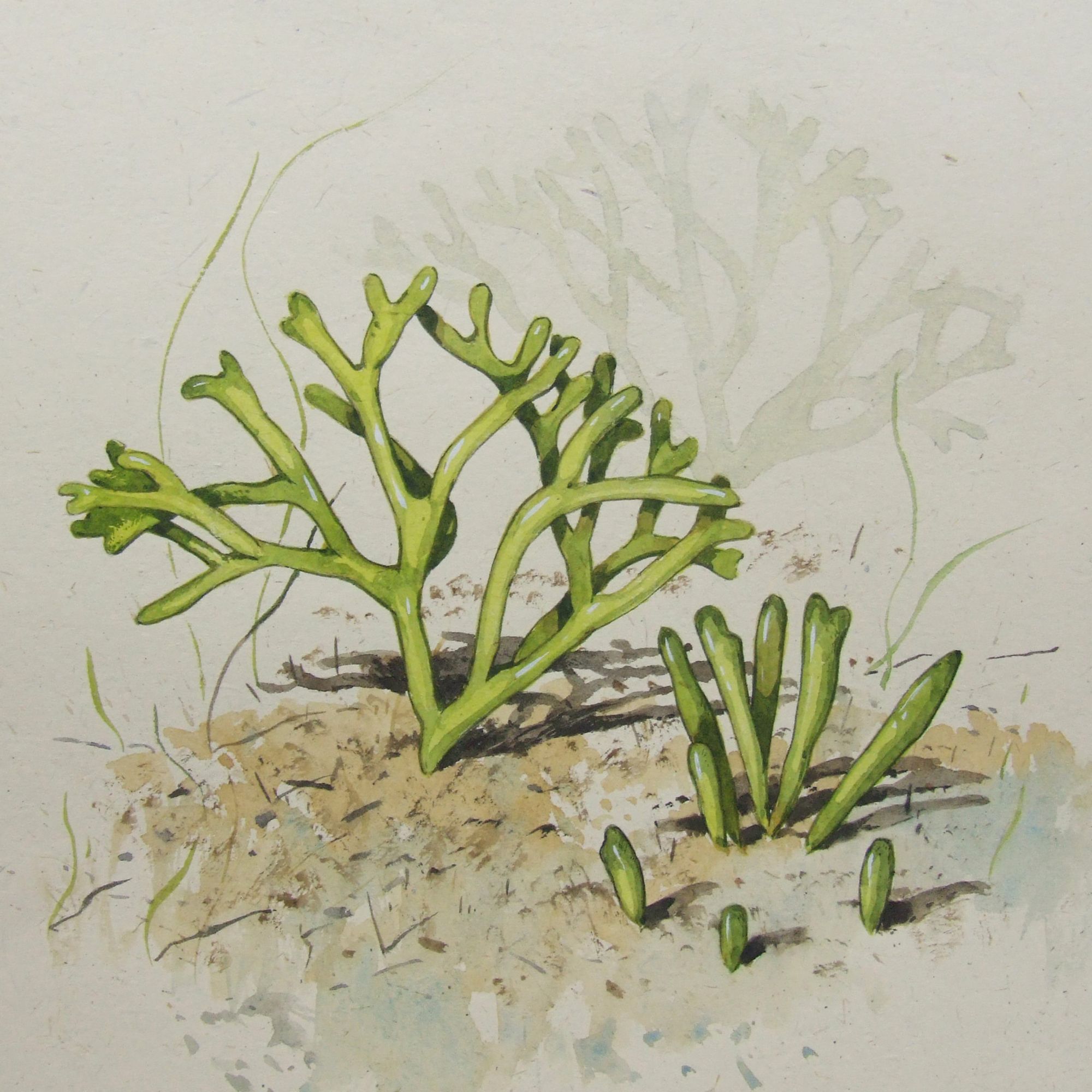
After selecting the species, a list of potential names was drawn up for each one, taking into account existing names in other languages, including the Latin scientific names and the Irish, English, Welsh, Manx, Cornish and, occasionally, the Scandinavian names. The proposals were then scrutinised by a panel of advisors, including language experts, authorities on Scottish wildlife and naturalists with expertise in particular species, before a poll effectively determined the final choice.
Although the name had to fundamentally make sense in Gaelic, certain conventions and traditions were also carefully considered. “The names of the plants and the animals often allude to their place in the environment, how they’re perceived by people and how people encounter them, so we tried to retain that as much as possible,” says Robertson.
Robertson refers to the Scots Gaelic term “dualchas”, which encompasses the intimate bonds that exist between the natural world, the land and its people that are transmitted through the generations.
To echo this idea, one of the project collaborators Rudy Gorman – an Irish-born poet with an intimate knowledge of both Irish and Scottish Gaelic – composed micro-poems for each of the species in a new book created to accompany the project, due out in June. These poems aim to “use the new names of the species and locate it in the physical and social landscape,” says Robertson.
dh’fhalbh MacThaidhg is na gìomanaich mu dheireadh is coimhid,
nach togadh e do chridhe buileach,
an clamhan-cluain’ thall a’ nochdadh
the last master gamekeepers have gone at last and look,
wouldn’t it just lift your spirits,
Montagu’s harrier appearing over by
Although many of the species are believed to have arrived in Scotland due to climate change, some were introduced directly by humans, such as Mandarin duck (Lach Shìonach), which was brought into collections of exotic wildfowl in Britain from at least the late nineteenth century.
Others have a more obscure origin story, such as ring-necked parakeets. Initially from Africa and southern Asia, these incongruously bright birds have been gradually expanding northwards ever since their arrival in the UK. Now there are small populations of the birds in Edinburgh and Glasgow, with one sighting as far north as Wick.
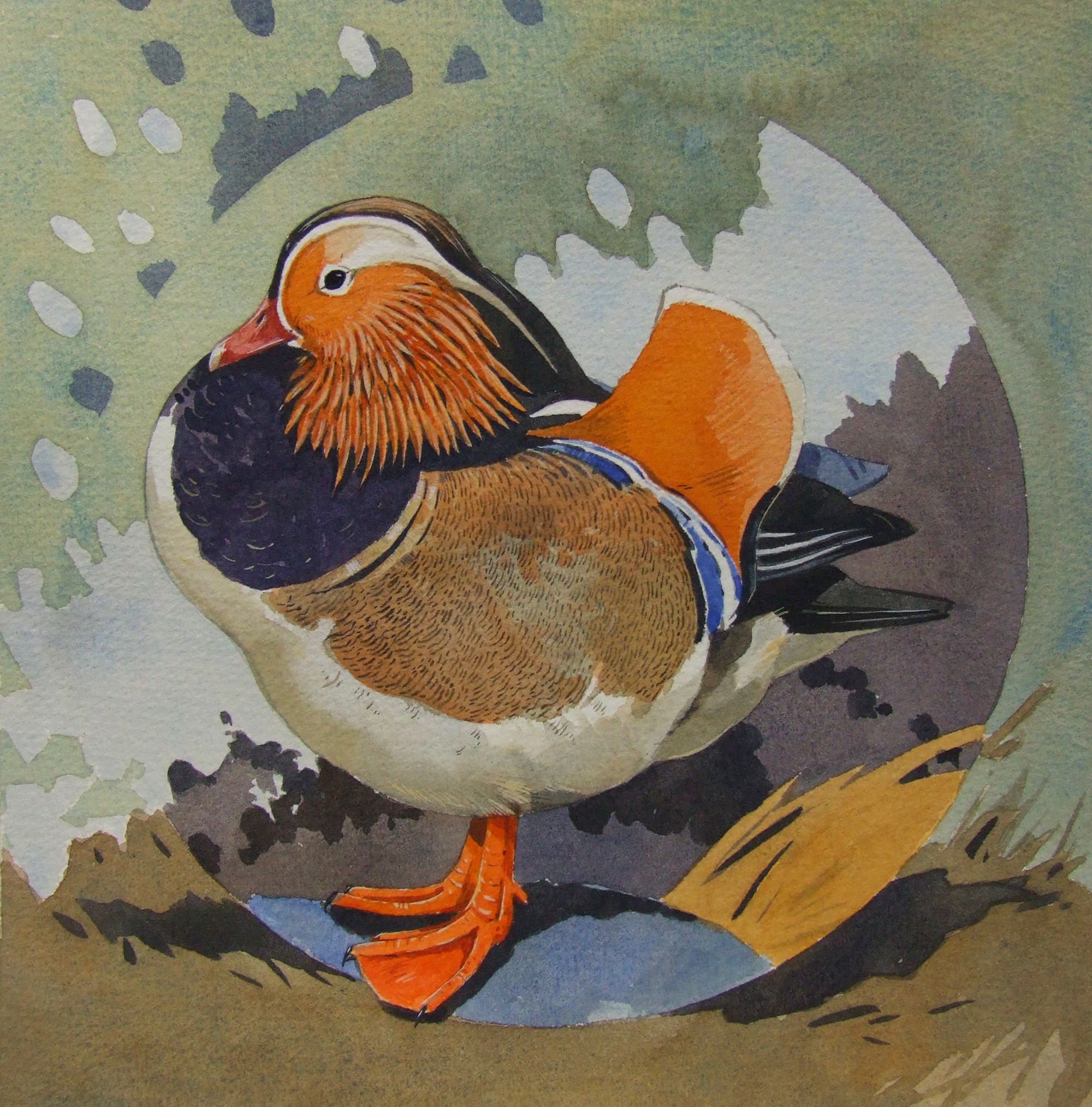
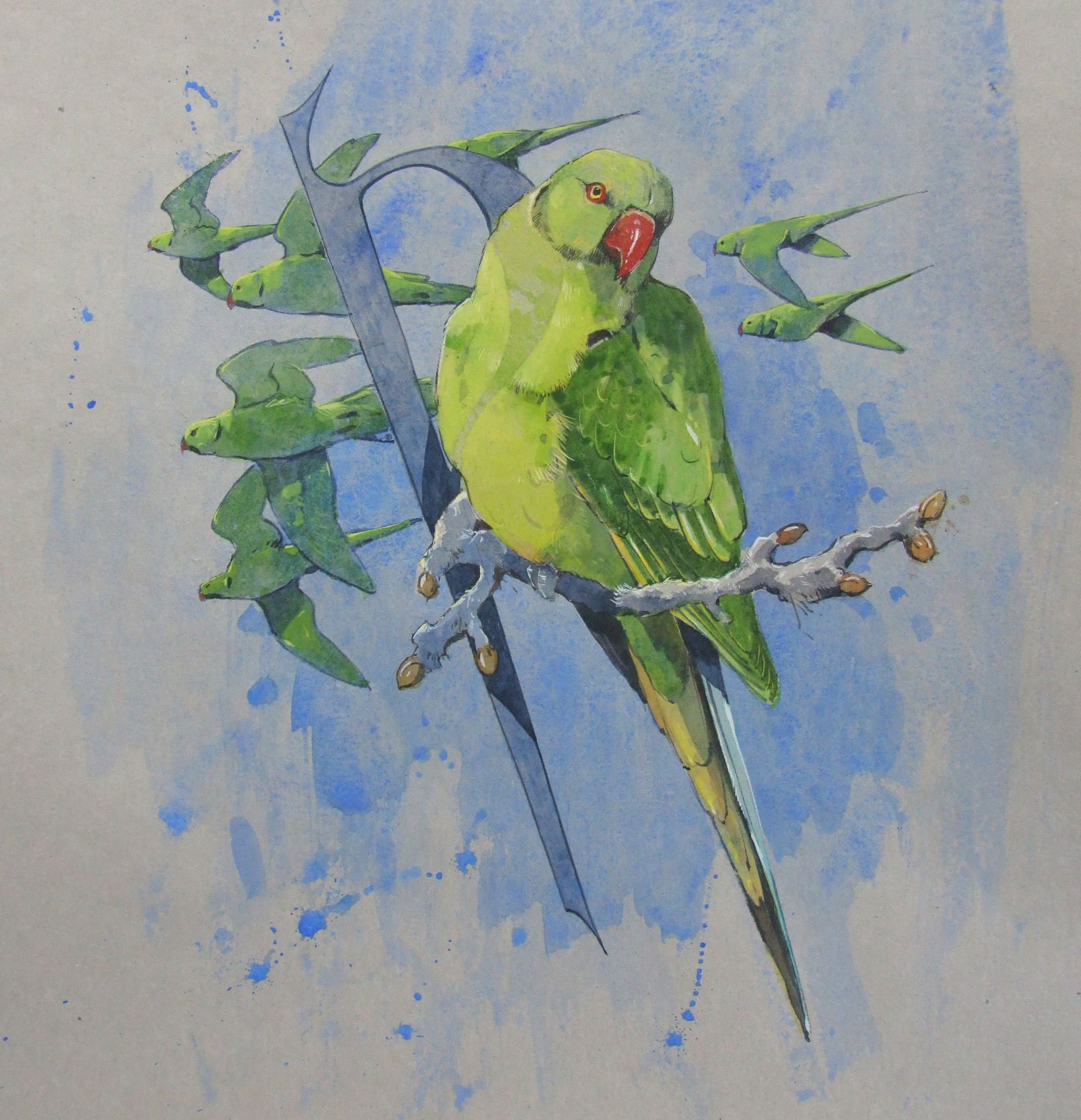
While limited data occasionally makes it difficult to determine how long a species has been in Scotland, others arrivals are well documented. “The Fork-palped Harvestman, for example, which is from Morocco originally, has been extending its range through Europe and up into Scotland,” says Robertson. “It arrived here in the last ten years and there’s been really good mapping year by year by people really interested in spiders.”
As well as deepening engagement with nature, the project serves to maintain Gaelic’s rich cultural link with the changing ecology of the landscape. Despite its status as a threatened language by the Endangered Languages Project, with just 1.1% of the Scottish population speaking it today, there has been a resurgence of interest in Gaelic in recent years, helped in part by the new Scottish Gaelic course on Duolingo, which currently has around 600,000 registered users.
As a language that is intrinsically connected to the living world, Gaelic perceives humans as part of nature, not separate from it – a sensibility shared by many Indigenous cultures around the world.
In Scotland, many place names carry valuable insight into the area’s historical and cultural heritage, such as Coire a’ Mhath-ghamhna (“the corrie of the bear”) in Perthshire and Allt a’ Mhadaidh (“stream of the wolf”) in Glen Shee – both evidence of long-lost animals that were once present in those regions.
Gaelic is also abundant in nature vocabulary, with entire lexicons of terms to describe various topographical features and natural phenomena, from “rionnach maoim”, the shadows that clouds cast on moorland on a windy day, to “eagmin mall”, the slow meander or winding of a river.
Arran Stibbe, professor of ecological linguistics at the University of Gloucestershire, believes that it is crucial to protect languages like Gaelic to preserve the environments in which they originate.
“Traditionally, Indigenous cultures lived within a particular local environment and depended entirely on that environment for their survival,” he says. “Their languages became attuned to the environment and encoded ways to live sustainably – for example, names for the edible and poisonous plants, stories to remember practices which went wrong or right, and metaphors that help guide behaviour.
“As global languages spread, they can wipe out the traditional ecological wisdom embedded in local languages. That’s because people within modern industrial civilisation do not depend on their local environment for survival; they can exploit environments far away and find new ones to exploit when they are destroyed. Their languages are therefore not directly orientated towards sustainable living in the local environment, and unfortunately it is these languages that spread.”
While linguists project that 50% of languages will disappear by the end of the century, projects like From the Bird’s Mouth demonstrate that language is also capable of evolving with new global challenges like climate change.
Elsewhere, other projects are coining new words to reflect our current realities, such as The Human Nature Dictionary, which was launched by artist Freedom Baird in 2016 and examines the ways human activity and nature intersect. Through public word coinings and submissions, the dictionary encompasses terms like “high bunk” for a bird’s nest on a skyscraper and “churum”, a creature that lives exclusively in urban puddles.
The Bureau of Linguistic Reality, created by Heidi Quante and Alicia Escott, adopts the same participatory approach to name unique emotions and experiences related to climate change. Ennuipocalypse, for example, refers to the concept of a doomsday that occurs on an excruciatingly slow time scale.
For Robertson, these changes represent a positive shift. While the future of such introduced species is unknown, the fact they now have a name in Gaelic acknowledges them as part of the changing ecosystem.
Having deposited copies of From the Bird’s Mouth with the libraries, museums and research institutes that have been advising on the project, the new names are already in use and serve as an ongoing reference. Robertson says: “I’m getting people contacting me saying, ‘Is there a word for this?’ And I say: yes there is, we’ve just created it!”
Paintings courtesy of From The Bird's Mouth.
Thank you for reading Inkcap Journal. Please consider supporting our independent environmental journalism by becoming a member. Subscribers also receive our weekly digests of nature news across Britain.
Subscribe to our newsletter
Members receive our premium weekly digest of nature news from across Britain.
Comments
Sign in or become a Inkcap Journal member to join the conversation.
Just enter your email below to get a log in link.






